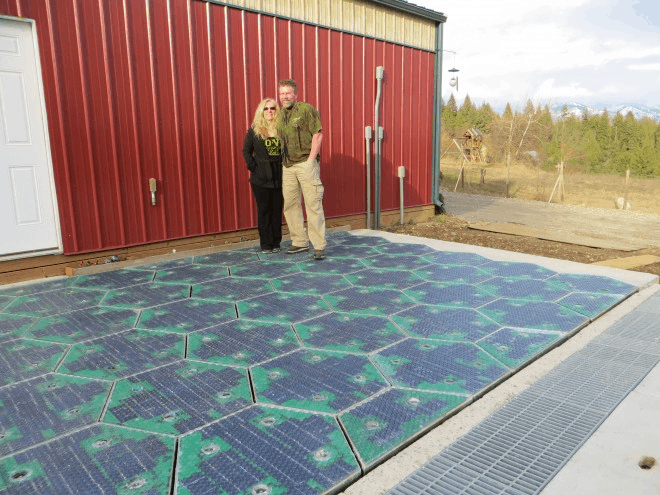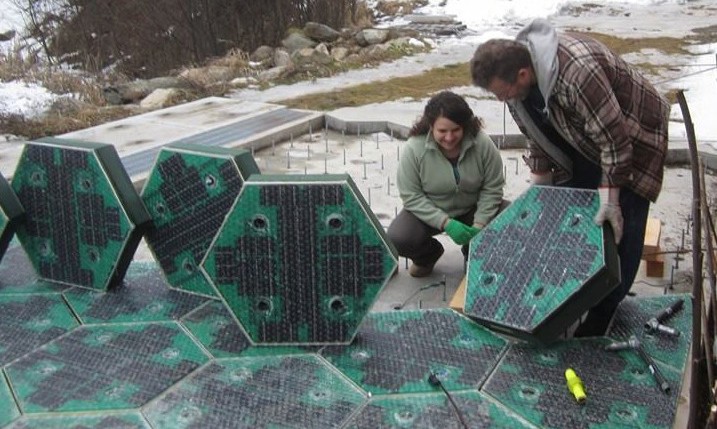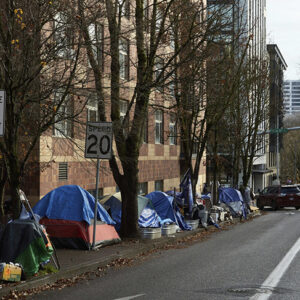You might have considered installing solar panels on your house or business rooftop, but did you ever consider redoing your parking lot in effort to harness sustainable energy? Thanks to an innovative couple from Idaho, this may soon become an option.
Scott and Julie Brusaw first created the one-of-a-kind road surface using solar panels in 2010. But now they’re back with a prototype, and are campaigning with IndieGoGo to secure additional funding.

Their aim is to replace traditional asphalt and concrete with impact-resistant solar panels that double as a road surface and an energy source. When their idea first debuted, it caught the interest of futurist and government officials. Now, the Brusaws have a working prototype that covers a 12-by 36-foot parking lot outside the couple’s electronics lab in Idaho.
Their updated panels look quite different than they did four years ago. Hexagonal, they now allow for better coverage on curves and hills. These new panels are also heated for easier snow and ice removal, and they include LEDs that can display road markings or even messages.
The Brusaws reported that the new panels have been tested for traction and impact resistance, and can even sustain a 250,000-pound load. They’ve even uploaded a video of a tractor driving over the parking lot prototype to example their durability. This marks the first time the panels have been released to be tested for real-world conditions, and the parking lot includes a dedicated channel for drainage and utilities.
To get to this point, the project was financed through two $50,000 private grants and two phases of private funding from the Federal Highway Administration. Presently, the Brusaws have launched an IndieGoGo campaign to raise $1 million for commercialization of their prototypes.

The concept is incredibly unique, and obviously very exciting for future green energy alternatives. Individually, small solar parking lots and crosswalks can power signs and street lamps. Deployed across a whole town, a network of solar roads could act as a decentralized electric grid, sending power to businesses and homes.
While there is not yet an estimate on how much the prototype installation costs, the numbers are being worked up and should be ready in July. However, the Brusaws don’t believe cost shouldn’t be an inhibiting factor, as a commercialized solar roadway will provide enough power to pay for itself over the course of its lifespan.
Source:


